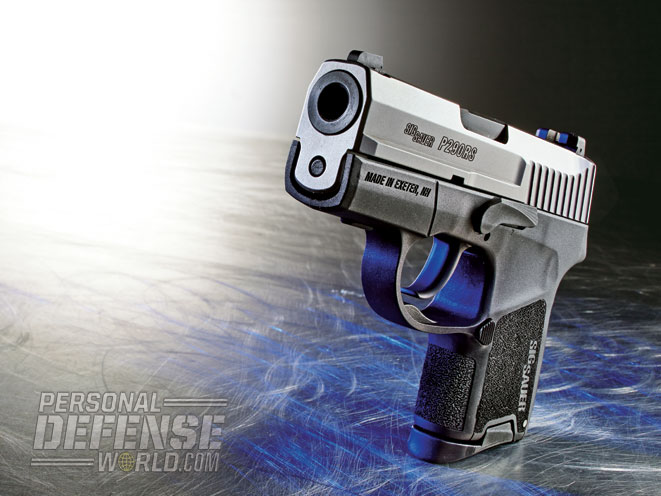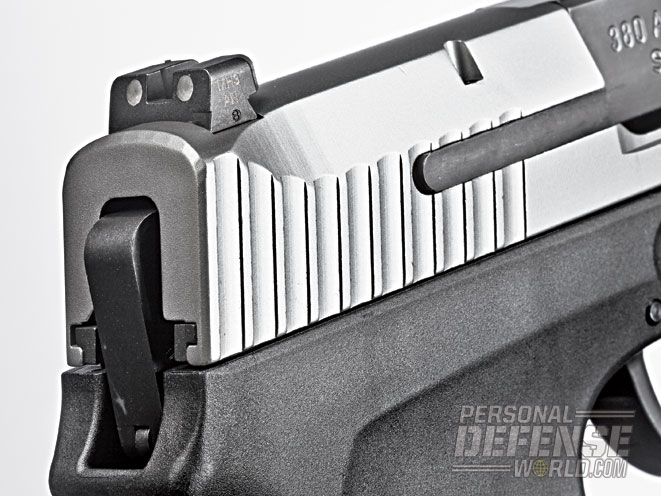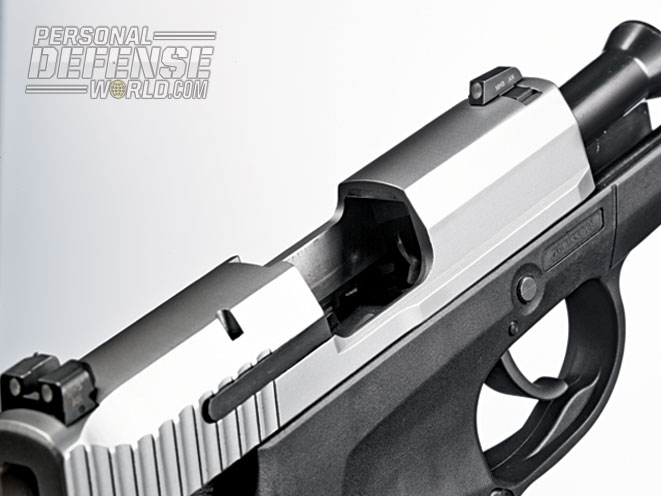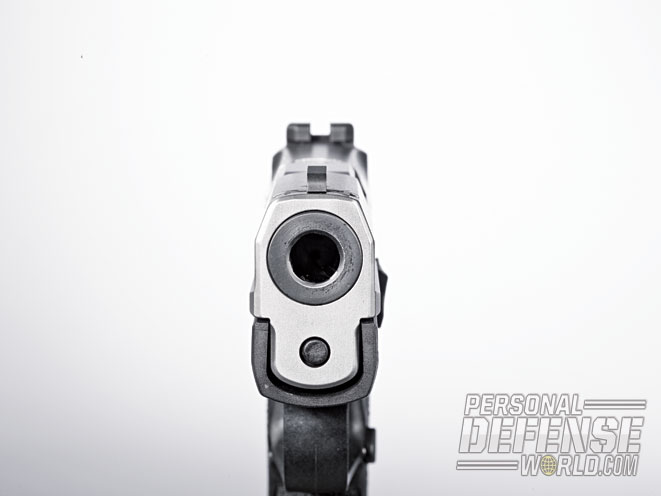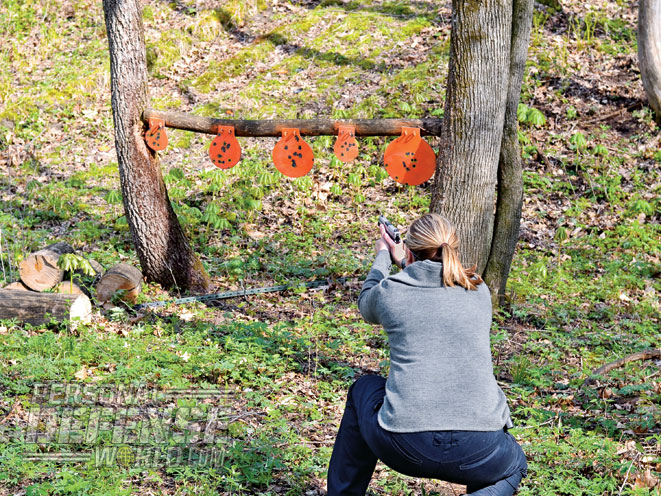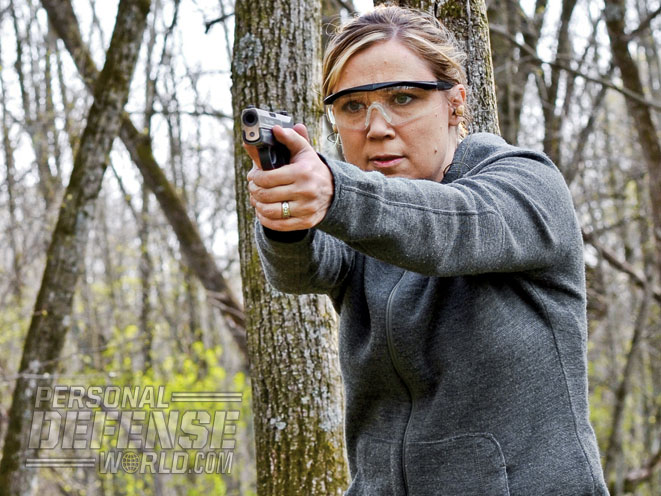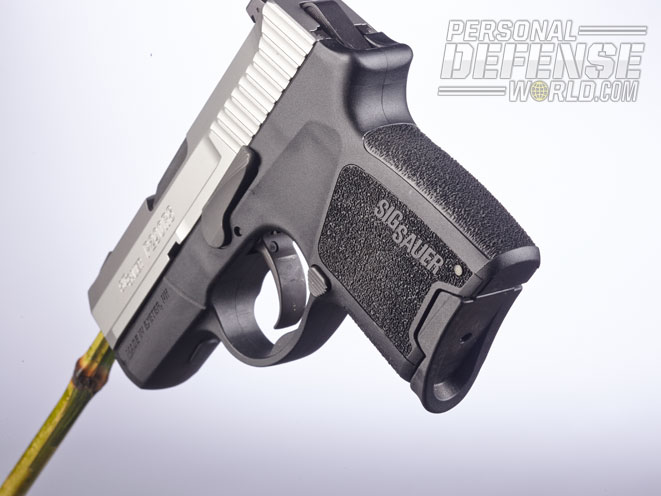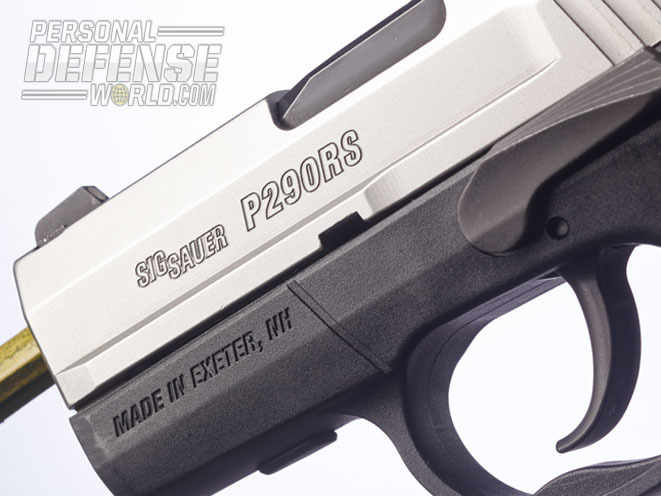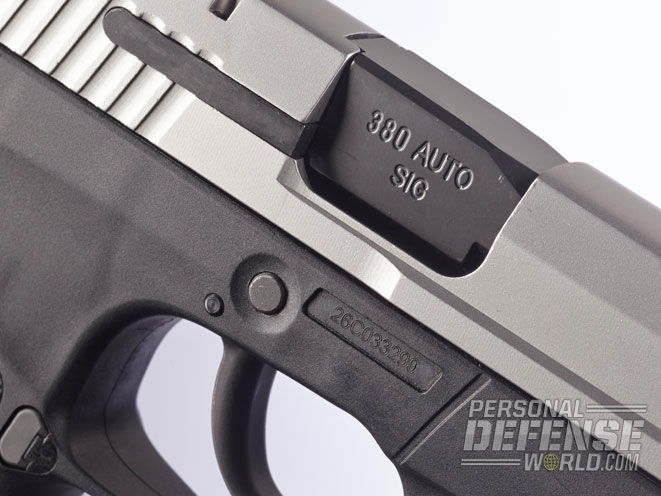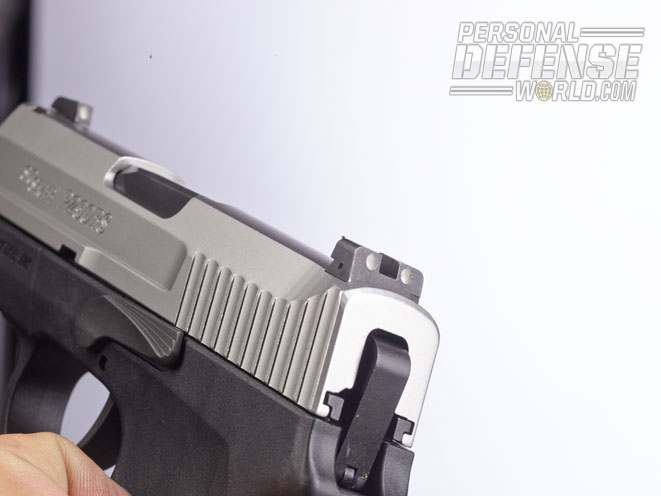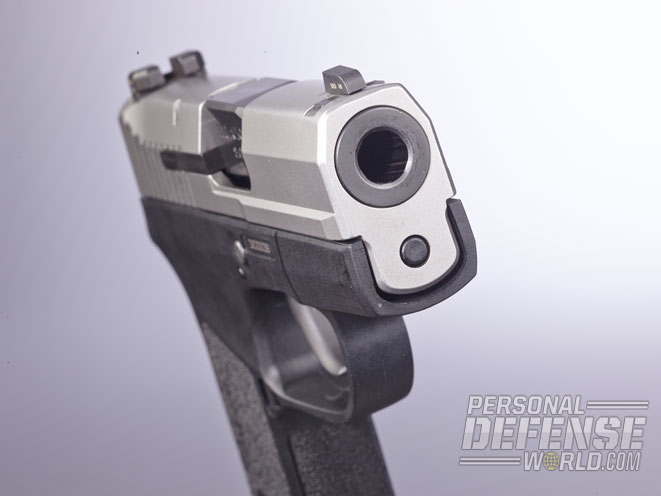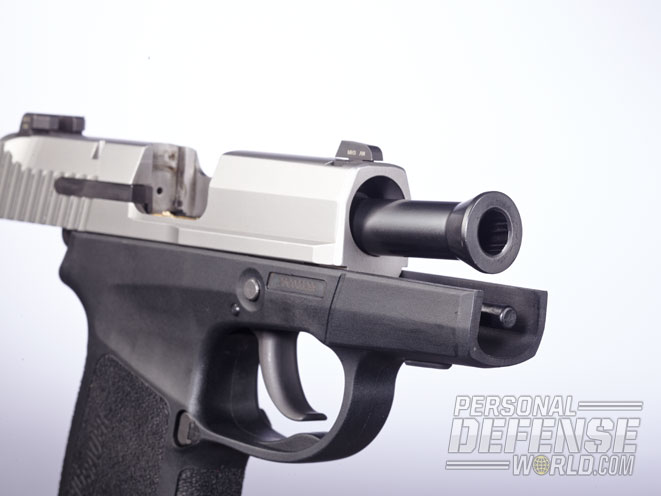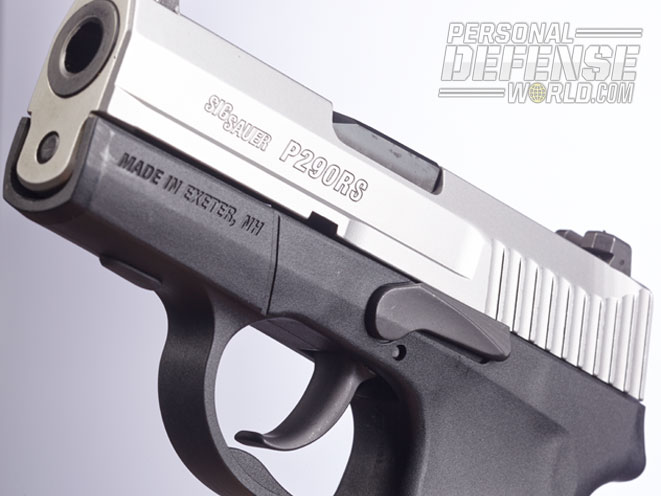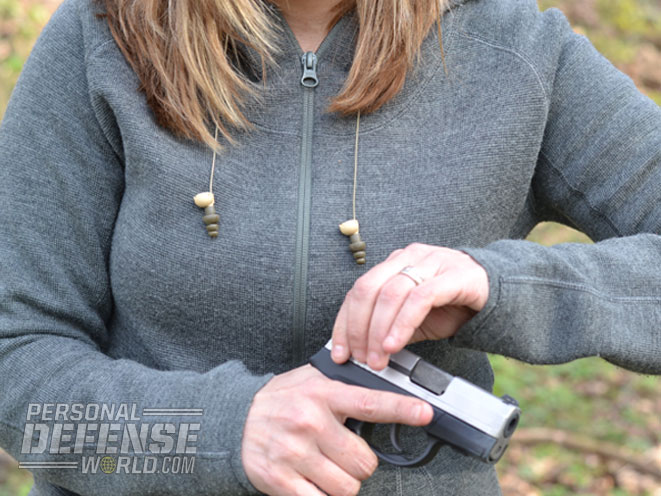One of the great outcomes from a booming firearms industry and its inherent competition is variety. Consumers can pick and choose firearms from manufacturers that they trust and which meet their needs in regards to size, weight, caliber and a multitude of features and nuances that make one model unique compared to all the other options. Most business decisions are the result of research on sales trends, customer feedback and formal reviews such as this one.
There is a certain level of uneasiness that I feel when writing a review on a company’s product because they are inherently subjective. My experiences, preferences and needs will differ from many other segments of the population. Since the Sig Sauer P290RS is marketed as a self-defense weapon, my review is based on how this firearm meets my expectations for a personal protection firearm for concealed carry. I would like to preface my review with the acknowledgement that most of the time I carry the Sig P238 as my personal defense firearm. Even with my most beloved firearms I always tend to have recommendations for improvement. I recognize that firearms manufacturers are not designing firearms for Sara Ahrens, but I am hoping someday they will!
I choose to carry .380s because they are typically smaller, lighter and easier to conceal. The ability to conceal a firearm is my first consideration when purchasing a firearm for personal defense. I will choose a firearm that is concealable but not so small that my hand envelops the firearm, making it difficult to shoot or causing malfunctions. Since this model is also chambered in 9mm, I was perplexed that Sig Sauer would offer two firearms essentially the same when it came to options, size and weight.
Advertisement — Continue Reading Below

I have no prior experience with the P290RS in 9mm, and in retrospect it may have been helpful for me to compare the two calibers side by side. I contacted a colleague on the law enforcement side of Sig, who also happened to certify me as a Sig armorer, for guidance on the reasoning for the release of the P290RS in .380. He explained to me that it was released to meet the unique demands of concealed carry customers. The P290RS in 9mm has a double recoil spring that may make the manipulation of the slide difficult for some shooters. The P290RS in .380 has only one spring, which eases the manipulation of the slide.
Many of my early firearm purchases did not involve shooting the potential purchase on the range. Over time, I learned this to be a huge mistake. Even though I made sure to manipulate the firearm and break it down in order to evaluate the ease of this process and investigate the internal parts, many times shooting the model of firearm I wanted to buy wasn’t a possibility. The Sig Sauer P290RS is the first firearm that has really reinforced that my earlier method of firearm selection was flawed.
First Impressions
Advertisement — Continue Reading Below

I first came across the Sig P290RS in .380 ACP at the International Association of Law Enforcement Educators & Trainers Association vendor event. Since I carry the Sig Sauer P238, this is a table I always peruse. If a firearm model catches my eye, I pick it up and manipulate it. I evaluate the firearm’s grip, trigger, trigger reset, weight, size, my ability to manipulate the controls and the locations of those controls.
My first impression of the P290RS was that it was a hefty firearm for a .380. This is not meant to have a negative connotation; it feels solid. I immediately began to compare the P290RS to my P238, which is my main carry firearm. Even though I tend to like larger grips, it was the shape of the P290RS that was different from the P238—and that was one characteristic that turned me off slightly—the P290RS’ grip has a slope from the tang to the bottom of the magazine well, whereas my P238 sports a straight backstrap. On the bright side, P290RS pistols have interchangeable polymer grip plates.
Range Time
Advertisement — Continue Reading Below
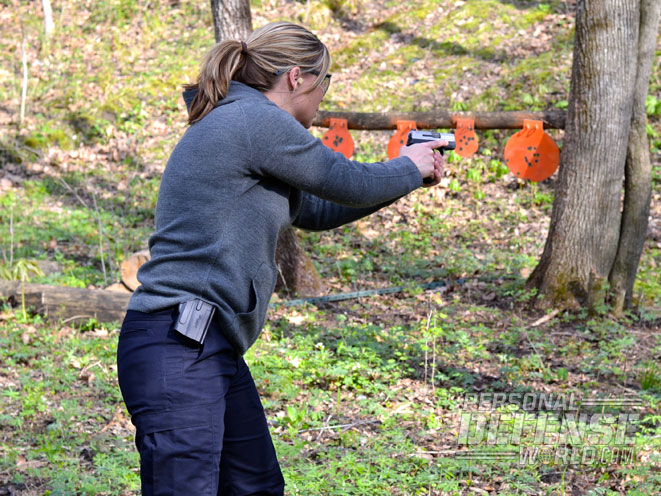
When I was asked to review the P290RS, I thought it would provide a great opportunity to shoot the firearm and provide honest feedback. When I received the P290RS, I took it to my property where I have a mini shooting gallery. In order to familiarize myself with the P290RS, I shot at steel plates with Federal American Eagle 95-grain full metal jacket (FMJ) ammunition. For such a small gun, the Sig P290RS is comfortable to shoot, and I found it to be pretty accurate right out of the box, consistently hitting the steel plates. I announced to my husband that I (ahem, I mean we) would most likely be buying the P290RS.
As I fired the P290RS, I took mental notes that there was some pre-travel on the trigger, but I considered it negligible. Had I not been attentive to this detail, I doubt it would have mentally registered. I could detect no obvious overtravel once the shot broke. The trigger pull distance is longer than most firearms I have shot. This is something that I would have noticed because it almost felt as if the trigger wasn’t going to break before reaching the rearmost position. The average trigger weight on the P290RS is 9 pounds; the weight and the pull distance is something that should be considered when purchasing this firearm for novice shooters, or shooters who may not have finger strength.
Advertisement — Continue Reading Below
This strength can be developed over time. I have personal experience that a heavier trigger coupled with a long pull distance can be a problematic combination for some shooters. I only mention it because of the possible psychological ramifications. Early in my law enforcement career, my department switched from a single-action (SA) to a double-action-only (DAO) firearm. Our firearm had a heavy trigger pull, about 10-12 pounds. After familiarizing myself with the new guns for about 150 to 200 rounds, we had to qualify with them. At this point some officers (myself included) experienced fatigue in our fingers—we weren’t used to pulling back this weight. During the qualification, some of us were unable to pull the trigger back to the breaking point. Even though I could not fire the last five rounds, I passed the qualification. Some officers were told by range staff to use two fingers to accomplish the task, which I refused to do. I eventually developed the strength, but it was little consolation to me as I went to work with that firearm later that night. My suggestion is, if there’s any doubt, dry fire any firearm a couple hundred times. If strength is an issue, work to develop it before carrying the pistol concealed.

Overall, the travel of the P290RS’ trigger was smooth and consistent. I habitually reset my trigger whenever shooting, so when I couldn’t feel a discernable reset on the P290RS, I short-stroked it repeatedly. The trigger must be returned fully forward to reset it and after enough repetitions I was able to adapt. Though I am not a huge fan of DAO firearms, I really do like the P290RS.
For me, an ambidextrous magazine release is an important characteristic. I rarely purchase a handgun that doesn’t incorporate that feature, but on this particular gun I might make an exception to my personal rule. The P290RS doesn’t have the capability to have the magazine release placed on either side of the firearm.
Advertisement — Continue Reading Below
I test fired the Sig P290RS .380 slow-fire, standing and unsupported from 7 yards with three different loads. My best result was courtesy of Hornady’s 90-grain Critical Defense FTX, which produced my best group size of 0.61 inches.
Final Thoughts

Throughout the testing, the Sig Sauer P290RS ran flawlessly with all four brands of ammunition. I did notice that when I switched to the self-defense ammunition and shot more than 150 rounds I began to experience discomfort in the webbing of my dominant hand from the slope in the grip. I fired about 400 rounds through the P290RS while test firing personal-defense ammunition. Even though I did experience mild discomfort, overall I was very satisfied with the P290RS’ function and reliability.
Advertisement — Continue Reading Below
For more information, visit http://www.sigsauer.com or call 866-345-6744.
This article was originally published in the December 2014 issue of COMBAT HANDGUNS. Subscription is available in print and digital editions below.
Advertisement — Continue Reading Below
